Coast in Sight!
Follow the stories of individual exhibits from the exhibition “Coast in Sight! Max Liebermann in Noordwijk“ and get to know the beautiful coastal town better with our audio guide.
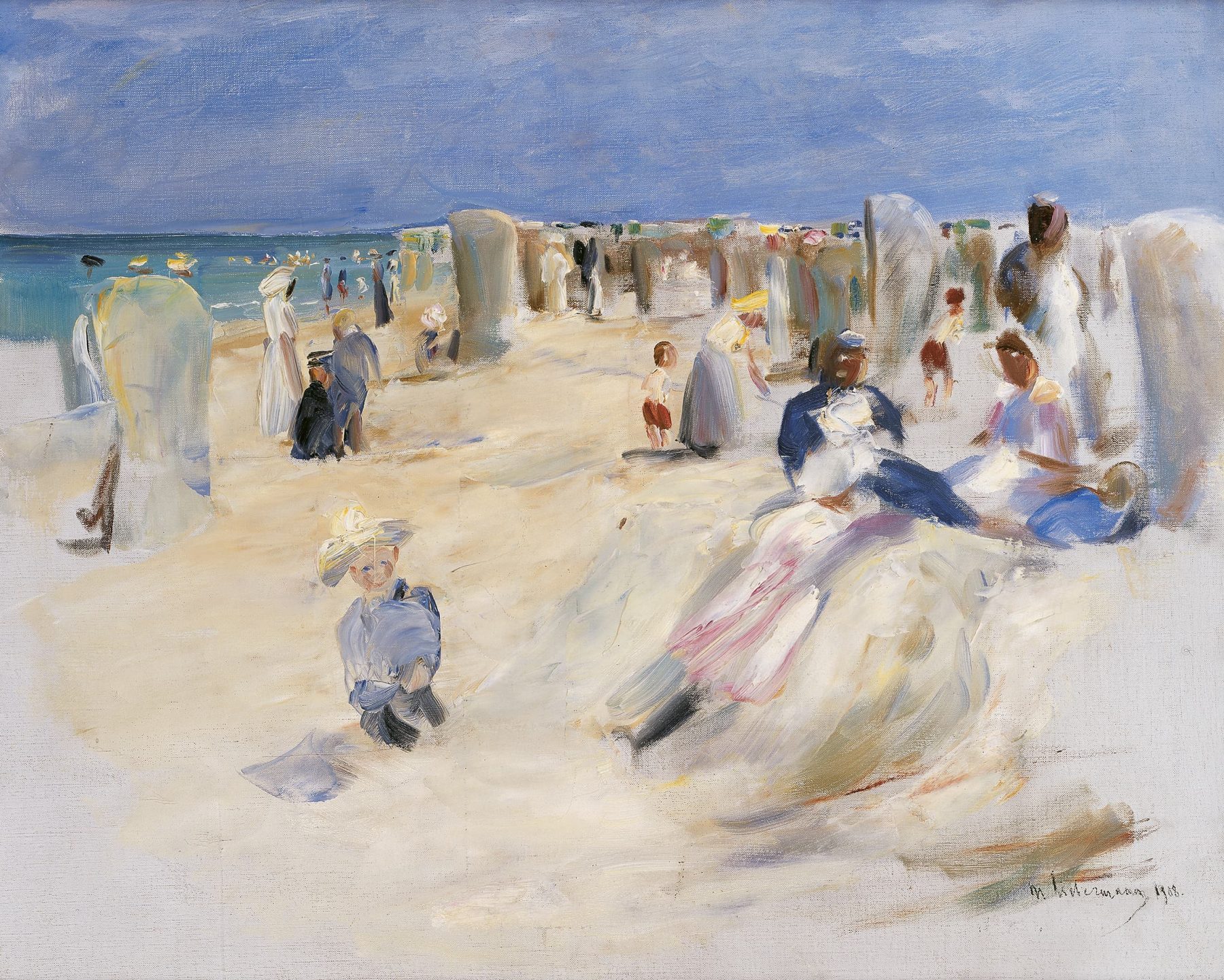
Introduction
Welcome to our exhibition Coast in Sight! Max Liebermann in Noordwijk. We’re delighted that you’ve come to visit us today! Between 1905 and 1913 Liebermann spent almost every summer in Noordwijk, an idyllic fishing village on the North Sea coast between Amsterdam and The Hague. Our exhibition focuses on the motifs he encountered and captured on his many trips to Noordwijk. In this audio guide we often quote directly from Liebermann’s letters, which contain some particularly vivid descriptions of his observations in Noordwijk. We hope you’ll enjoy this trip to the coast with Max Liebermann!
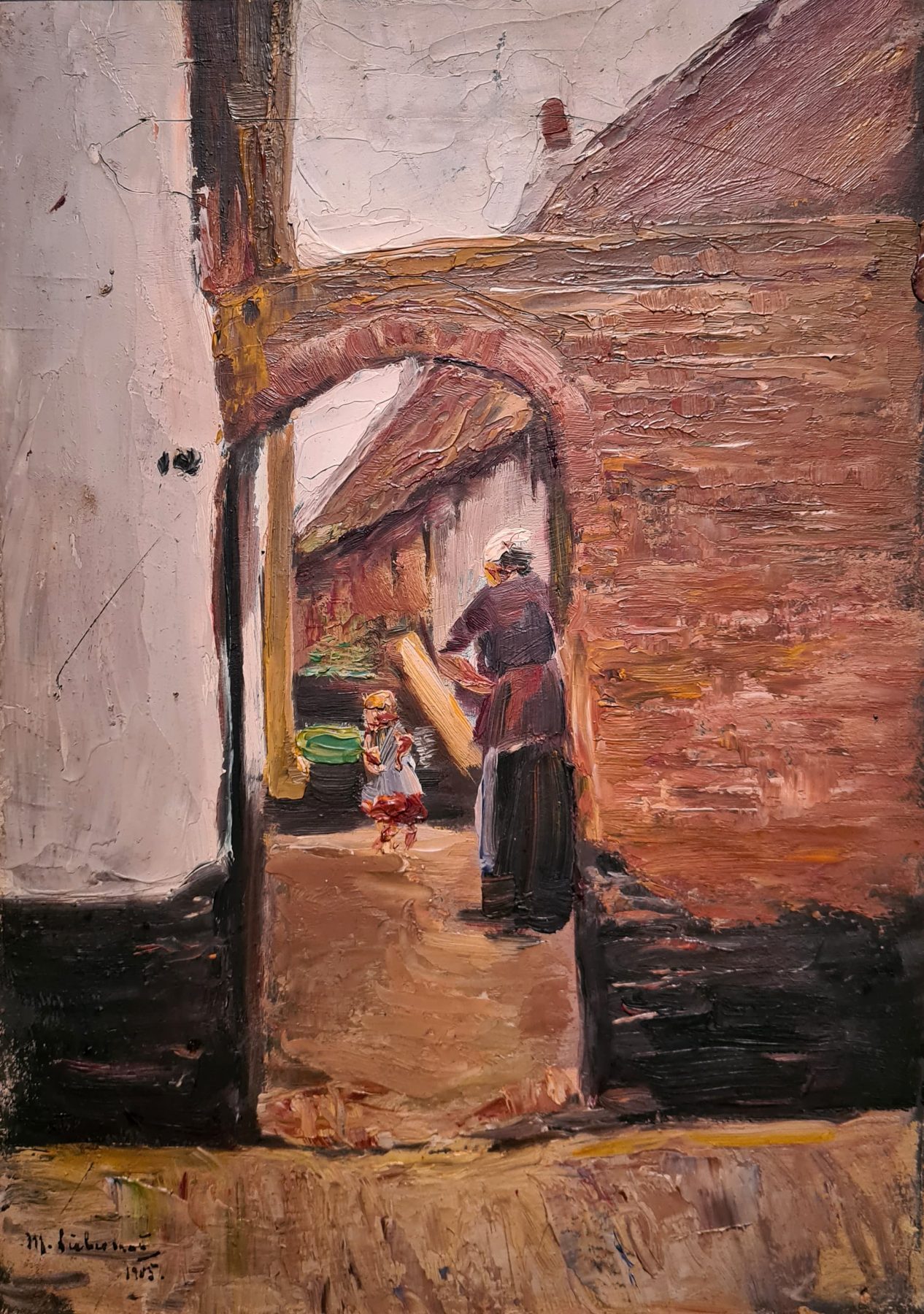
1905: First Pictures from Noordwijk
Max Liebermann first travelled to Holland in 1871 while still a student at Weimar. He was immediately enchanted by the people, the broad plains of the landscape and its rich artistic tradition. Over the coming decades, inspired by the naturalism of the French school of painters at Barbizon, Liebermann would return to Holland on an almost yearly basis to paint the hard-working people of the countryside.
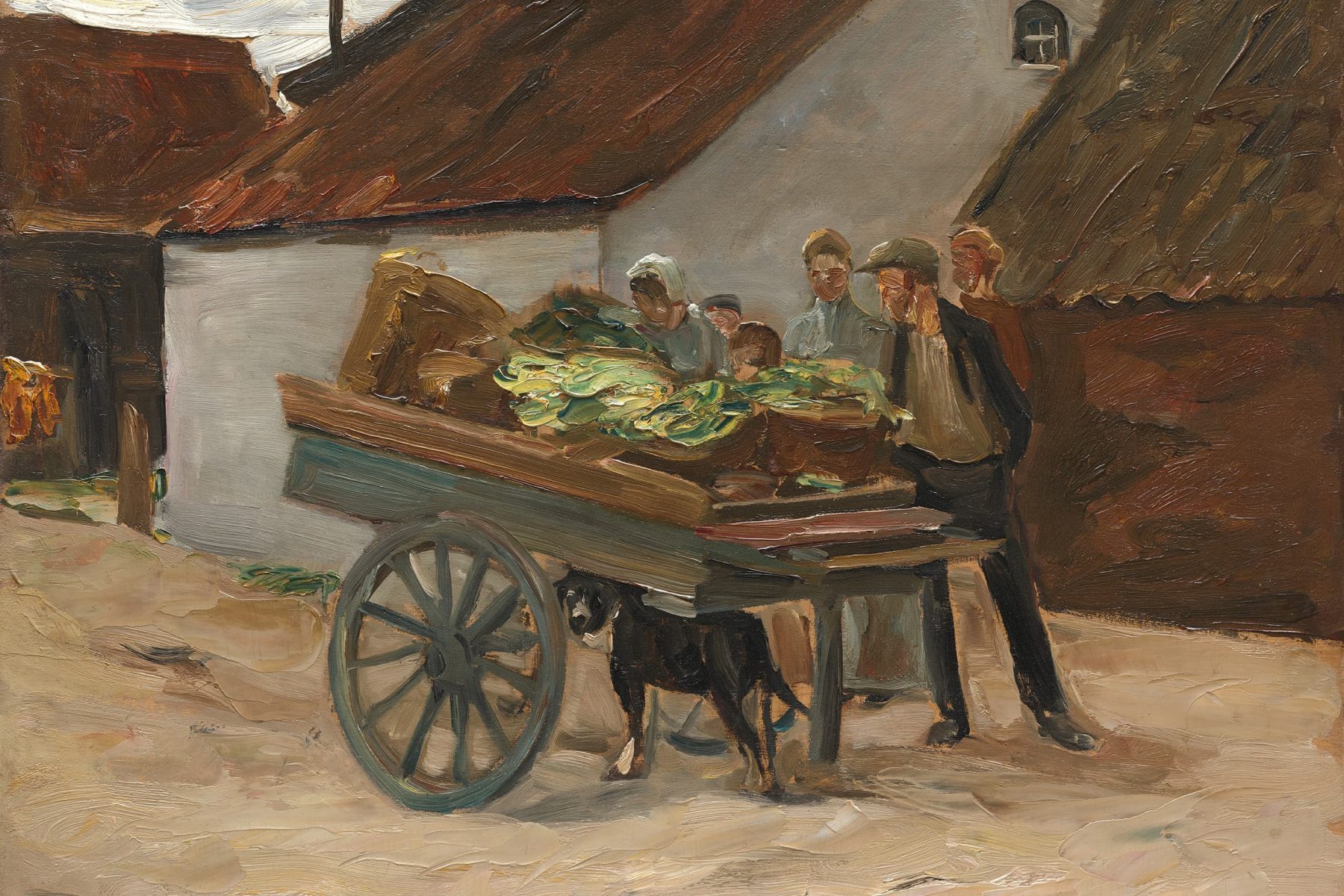
1906: Village and Country Life
Liebermann only spent a few days in Noordwijk in 1905, around the end of July and the beginning of August. In this short time he managed to paint no less than thirteen oil paintings, mostly of village scenes and streetscapes with children playing. Liebermann came back to Noordwijk again the following year. Village life remains a feature of the paintings from 1906 – as in this picture of a grocer.
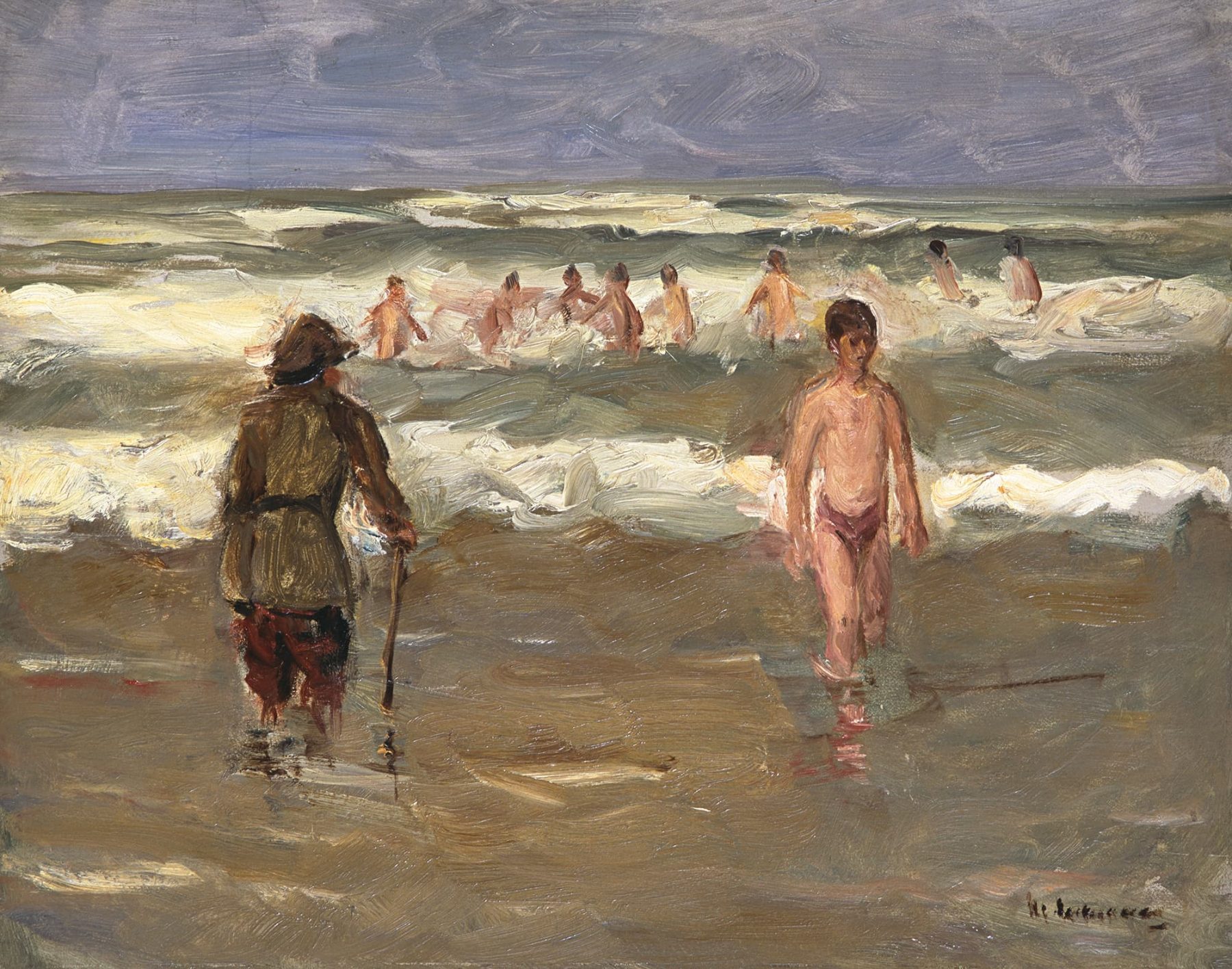
1907: Festivities in Noordwijk
On 6 July 1907 Liebermann travelled to Noordwijk again. He stayed for nearly two months. The last letter he wrote from the coast is dated 11 September 1907. Most of the pictures he painted that summer show people enjoying themselves on the beach: boys bathing, the famous equestrian pictures and the view of the sea from the dunes. It was a productive summer for the Berlin painter. Above all, though, it was a sociable trip enlivened with festivities.
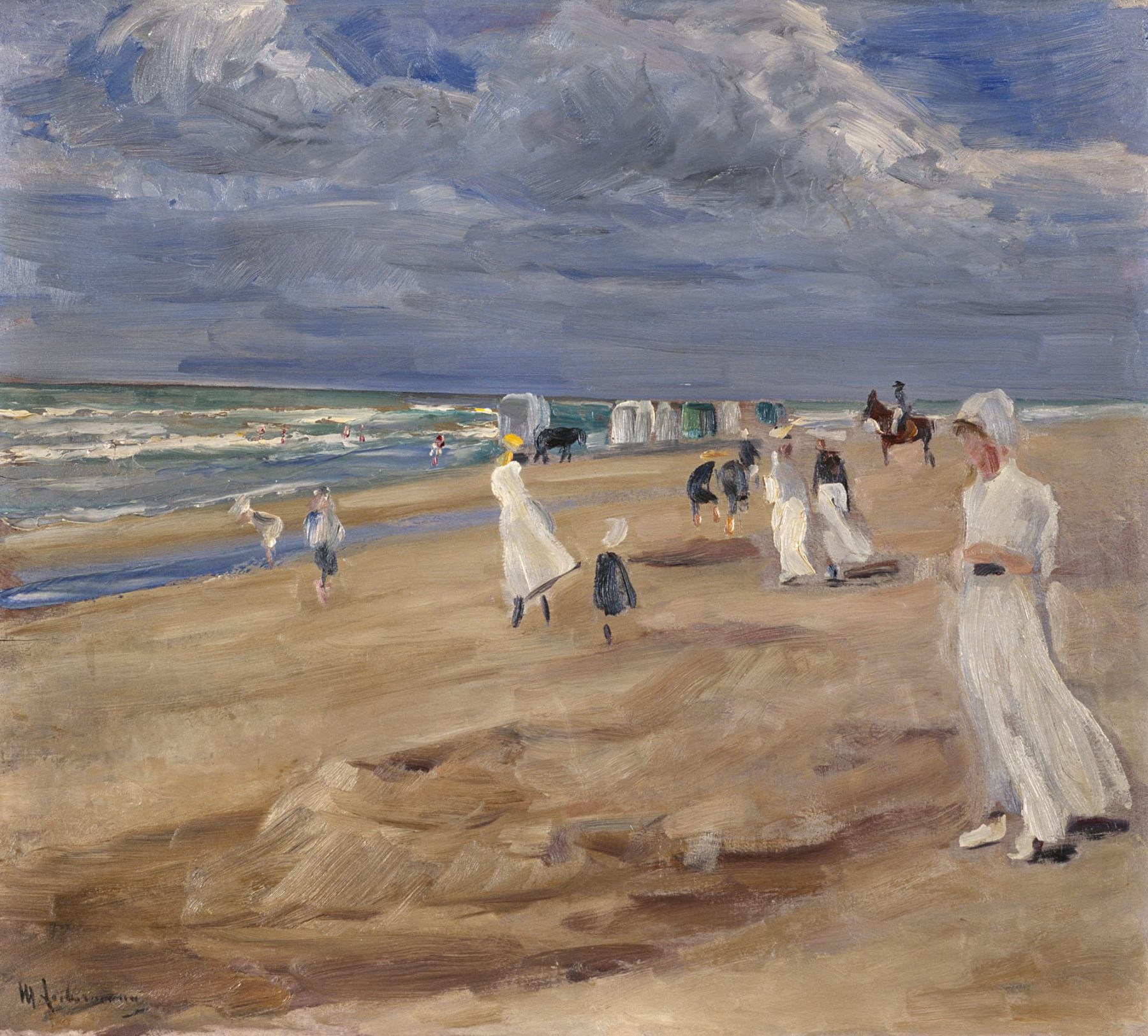
1908: A Meeting Place of Modernists
As we’ve heard, Liebermann’s art dealer Paul Cassirer had a summer residence built in the dunes in 1906. Cassirer’s villa had the best possible sea view and was later renamed the Villa Mare. Cassirer invited many of his artist friends to stay at his villa in the dunes of Noordwijk, so Liebermann met several of his secessionist colleagues that summer, among them Max Slevogt and Lovis Corinth.
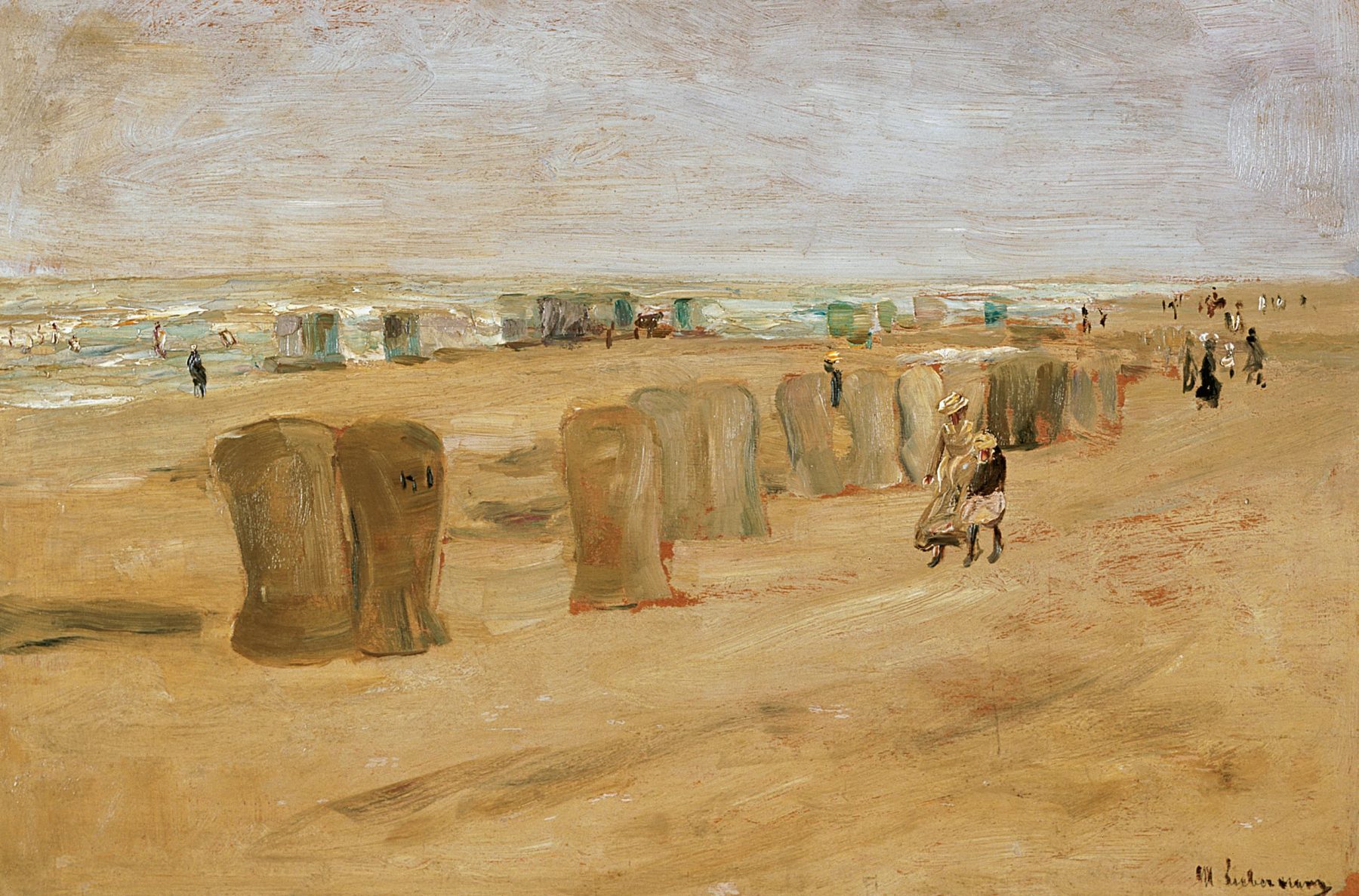
1908: The Letters from Noordwijk
There are several preserved letters from Liebermann’s trip to the Dutch coast in 1908. From these we learn how important his annual excursions were for him. At the end of June that year, in eager anticipation of his coming travels and the inspirational coastal environment, Liebermann wrote the following lines to Alfred Lichtwark: ‘We’re travelling to Noordwijk on 30 June, i.e. the day after tomorrow. I’ve been doing too much portraiture lately and need to get back to working in the great outdoors. That’s the best cure for a painter!’
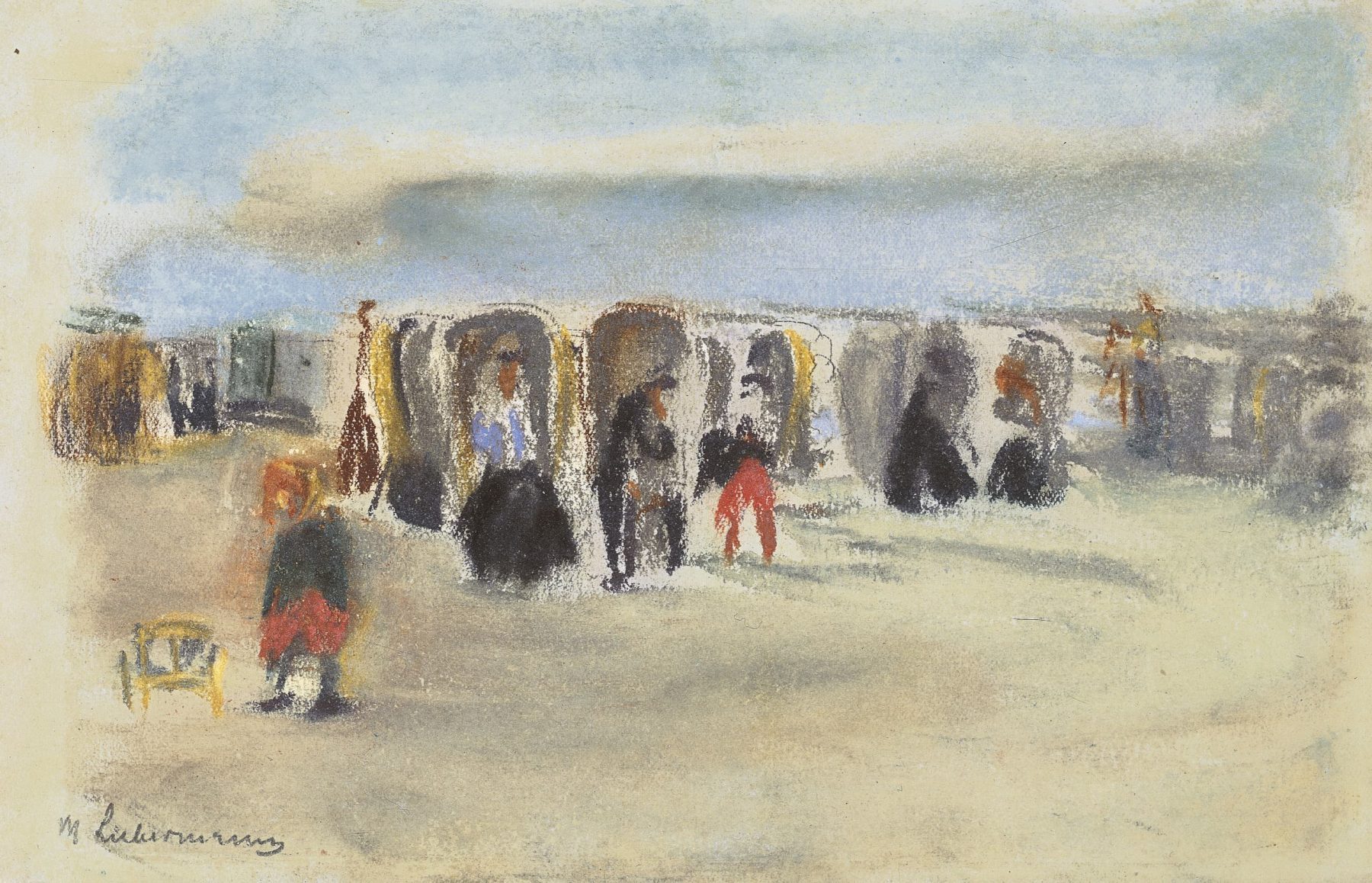
The Pastels
In the years after 1900 pastels became Liebermann’s preferred medium for capturing fleeting moments and lighting situations in the open air. He made dozens of these small, colourful drawings in Noordwijk.
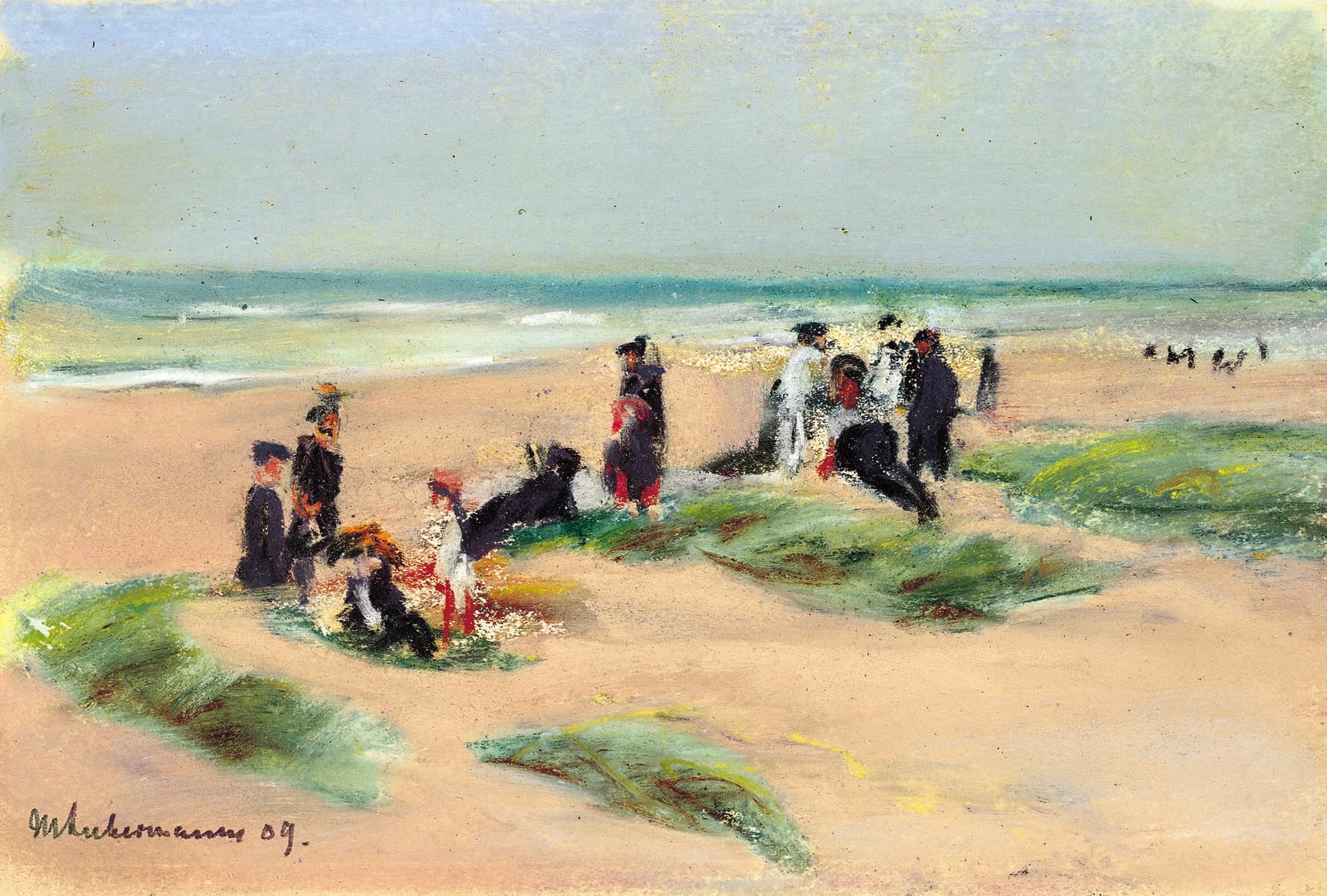
1909: Silver Wedding Anniversary in Noordwijk
This pastel drawing was made in 1909. It depicts a beach scene in loose strokes. Liebermann here catches a fleeting moment from his summer in Noordwijk. Bathers in sunhats have set themselves down on the sand between the grassy dunes. The people standing in the surf in the background are no more than individual points of colour in the distance.
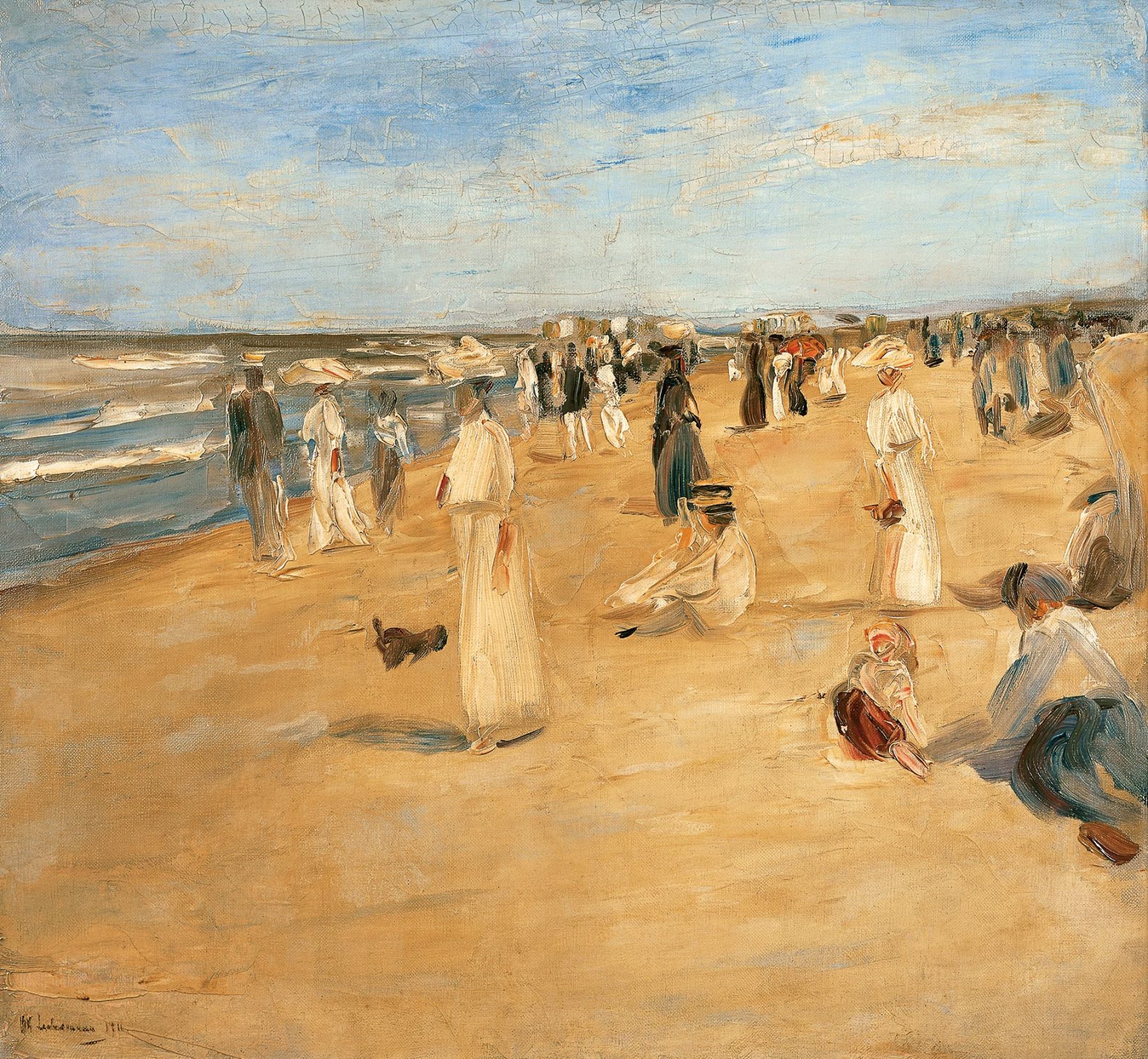
1911: A Productive Summer
Liebermann didn’t travel to Noordwijk in 1910. With his summer house on Lake Wannsee complete, he spent the first summer in the new residence together with his family. When he next visited the seaside resort the following year, the summer of 1911, he was all the more productive.
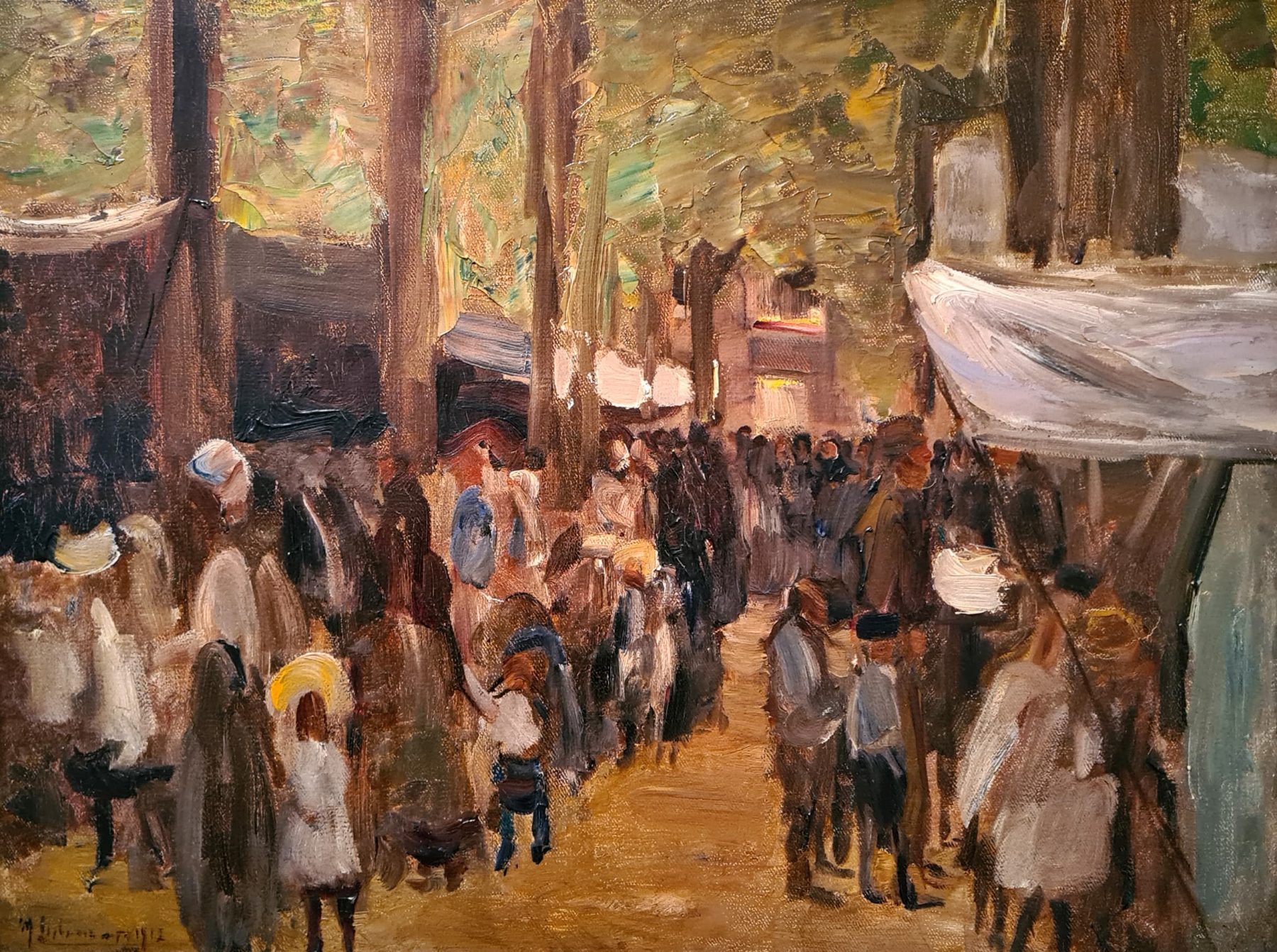
A Rainy Summer
Apparently the summer of 1912 was wet. On 9 September, in a letter to his publisher Bruno Cassirer, Liebermann wrote about the weather and weighed up the prospect of a poor painterly ‘haul’ – ‘In forty-three years of travelling to Holland I have never yet experienced such an awful summer. I fear the harvest this year will be correspondingly meagre and that prices will shoot up (given the high demand). So secure what you need as early as possible.’
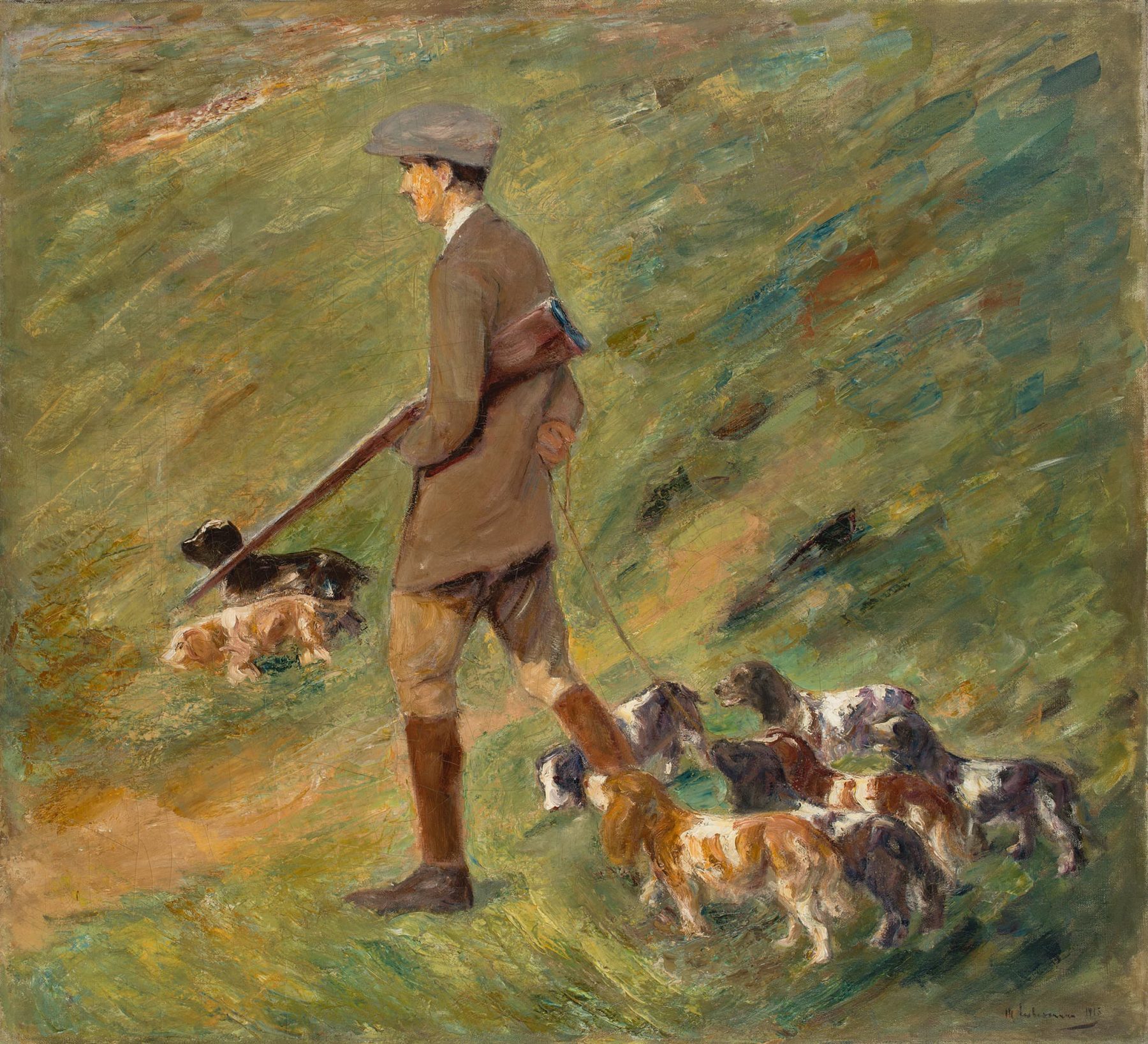
1913: The Last Year at Noordwijk
Liebermann summarized his last year in Noordwijk in a letter to Alfred Lichtwark sent from the Hotel Huis ter Duin and dated 19 August 1913: ‘I have been back here for a week now, in a place where I know every soul, every building, almost every tree – indeed where I have painted almost everything. It’s like a bathing cure for the soul when I spend a few solitary weeks here.’
Introductory wall text
In 1905, after some thirty years of regular painting excursions to Holland, Max Liebermann (1847–1935) discovered the fishing village of Noordwijk on the North Sea coast between Amsterdam and The Hague. Until the outbreak of the First World War Liebermann spent virtually every summer at this bathing resort, the only exception being 1910, the year in which his villa on Lake Wannsee was completed. The war brought an abrupt end to his annual trips to Holland. From 1914 until his death in the spring of 1935 Liebermann spent the summer months with his family here at Wannsee.
The pictures from Noordwijk are thus Liebermann’s last Dutch works. Executed between 1905 and 1913, they capture on the one hand Noordwijk’s rapid transformation from fishing village with unpaved streets into a cosmopolitan tourist resort. On the other hand these works clearly bear witness to Liebermann’s total dedication to the style and the techniques of Impressionism. He frequently worked in the open air – en plein air – and repeated his motifs under the widest possible variety of climatic and atmospheric conditions, be it dark stormy clouds or brilliant sunshine. In subtle pastels he captured the light and colours of the coastline in a few deft marks, while the subjects of his paintings are just as skilfully described in fleeting brushstrokes. As the final chapter in Liebermann’s Dutch adventure, the works from Noordwijk are the immediate precursors, both chronologically and stylistically, to his masterful late work, the intensely colourful garden pictures from Wannsee.
In this exhibition we invite you to take a journey with us to Noordwijk on the Dutch coast to see how Liebermann saw it between 1905 and 1913. We recommend taking a tour of the exhibition with our free audio guide, in which we quote from Liebermann’s letters and the observations of his contemporaries in order to better describe Noordwijk and what it was that made it so important to this painter from Berlin.
Timeline: Noordwijk & Max Liebermann
1905
In the summer of 1905 Max Liebermann visits Noordwijk for the first time. After visiting Pontresina in Switzerland with his wife Martha and daughter Käthe, he travels on to Holland alone at the end of July.
Liebermann remains in Noordwijk for around ten days, until the beginning of August. He stays at the Villa Elisabeth, an annexe of the Hotel Huis ter Duin.
Liebermann’s Berlin art dealer, Paul Cassirer, has already discovered Noordwijk. In the summer of 1905 Cassirer decides to build a villa for himself in the dunes.
1905
In July 1905 Liebermann turns fifty-eight years old. As a founding member and the first president of the Berlin Secession (est. 1899), he is one of the most famous and successful artists in Berlin. At this point his portraits are particularly sought-after among the art collectors of Berlin.
Liebermann has made almost yearly visits to Holland since the 1870s. He makes a name for himself in Berlin with his naturalistic depictions of the rural population of the Netherlands.
1906
In the summer of 1906 Liebermann travels to Noordwijk on 8 August and stays for almost six weeks. He takes lodgings at the Villa Briesen on Pickeweg with Martha and Käthe.
1906
In 1906 Liebermann features prominently in the centenary exhibition of the Nationalgalerie in Berlin: the “Exhibition of German Art from the period 1775–1875“. At least nineteen of his oil paintings are shown, many of them depicting Dutch motifs.
1907
On 6 July Liebermann arrives back in Noordwijk. Along with Swiss painter Karl Walser he is a guest of Paul Cassirer and Tilla Durieux at their villa in the dunes. Here the painter celebrates his sixtieth birthday. At the end of July he travels on to Delft.
1907
In the spring of 1907 Liebermann’s twenty-two year-old daughter Käthe causes controversy by breaking off her engagement to Lieutenant Erich Ladenburg. Liebermann’s letters from Noordwijk suggest that he sympathises with her. On 16 August he writes to his friend and fellow painter Gustava Iselin-Haeger: ‘The bridegroom was a decent and capable man – just not the right man. It was all very awkward, but – thanks be to God – not yet too late.’ In 1915 Käthe Liebermann marries the diplomat Kurt Riezler.
1908
Having spent four weeks in Italy, at the beginning of July 1908 Liebermann heads for Noordwijk, where he stays for nearly two months. On 31 August he travels on to Amsterdam.
In 1908 he again stays at the Villa Elisabeth with his family. This year Paul Cassirer invites two more painters to Noordwijk: Max Slevogt and Lovis Corinth. The three German Impressionists work together in the dunes.
1908
Besides group exhibitions in Berlin, Bremen, Budapest and Dresden, in 1908 Liebermann’s work is acknowledged in a major solo exhibition in Copenhagen. Over fifty works are shown, including motifs from Noordwijk procured for the exhibition by the art dealer Paul Cassirer.
1909
Liebermann travels to Noordwijk with his wife Martha on 6 August 1909. They celebrate their silver wedding anniversary at the Hotel Huis ter Duin. From here he writes to Alfred Lichtwark: ‘You’re quite right to say in your letter that we have every reason to be content with our lot, and indeed we are. Certainly our little ship has borne many a dashed hope, but we are no less receptive to life’s pleasures than we were twenty-five years ago. What more could one ask of fate?’
1909
On 14 July Liebermann acquires one of the last remaining plots of land on the banks of Lake Wannsee by Berlin. The plot is part of the famous Alsen villa colony, a home from home to Berlin’s upper middle classes. Families with summer residences here include the Langenscheidts, the Oppenheims, the Springers, and the Siemens family. A year earlier Liebermann had already expressed a desire to avoid ‘the long summer journeys’ and ‘the need to hang around in dire hotels at the ripe old age of sixty one.’
To build his summer house he commissions the architect Paul Otto August Baumgarten, a student of the famous Berlin architect Alfred Messel.
1910
1910
By the spring of 1910 the work at Wannsee is virtually complete and the villa is ready for its occupants. On 26 July the Liebermanns move into their ‘castle by the lake’ and spend their first summer there. Liebermann does not travel to Noordwijk in 1910.
1911
In mid-August Liebermann travels to Noordwijk on his own and takes a room at the Hotel Huis ter Duin. He has an extremely productive stay, painting eighteen pictures in just four weeks.
1911
In Berlin, internal disagreements increasingly affect the work of the Berlin Secession, and Liebermann resigns from his position as president. He is succeeded by Lovis Corinth.
1912
The guestbook of the Hotel Huis ter Duin notes that Liebermann arrives by car on 19 July 1912. The daily papers report that his automobile was made by the French manufacturers Bugatti.
The weather in the summer of 1912 is among the worst Liebermann has experienced in Noordwijk – with consistent rain. He paints grey, cloud-laden scenes of cabbage fields and the town market. The weather only begins to improve toward the end of his stay. Liebermann leaves Noordwijk for Paris on 17 September.
1912
Liebermann receives countless honours and accolades on the occasion of his sixty-fifth birthday. He becomes a member of the French Académie des Beaux-Arts, is elected to the senate of the Berlin Academy of Arts, receives an honorary doctorate from the University of Berlin, is awarded the Order of Orange-Nassau and becomes a corresponding member of the art academies in Brussels, Stockholm, Milan and Vienna. He is also appointed honorary member of the art academies in Munich, Weimar and Dresden.
1913
Liebermann arrives for his final summer in Noordwijk on 12 August. He rents the Villa Briesen, an annexe of the Hotel Huis ter Duin, and stays for five weeks. On 19 September he takes the 8:15 tram to Leiden in order to catch the train from there to Amsterdam.
1913
The disputes within the Berlin Secession show no sign of abating. Liebermann resigns his membership altogether in 1913. He becomes a member of the ‘Free Secession’ – a group of artists who break away from the Berlin Secession because of the disagreements.
After 1914
After 1914
In 1914 the Free Secession nominates Max Liebermann as its honorary president. He has just turned sixty-seven when the First World War breaks out on 28 July 1914. The war and the Dutch policy of neutrality mean that the country’s borders are closed.
In February 1915 Liebermann expresses his wish to visit Noordwijk again someday. On 1 February he writes to the hotelier Wilhelm Tappenback: ‘Hopefully the spring will bring peace, and if it does I shall be able to come back to Noordwijk in the summer.’ Sadly this wish would remain unfulfilled. Liebermann never returned to Noordwijk after the war.
Production
Text and Editing: Viktoria Krieger, Lucy Wasensteiner, Clara Busemann, Naciye Kazan
Translation: Jonathan Blower
Speaker: Ingo Kays